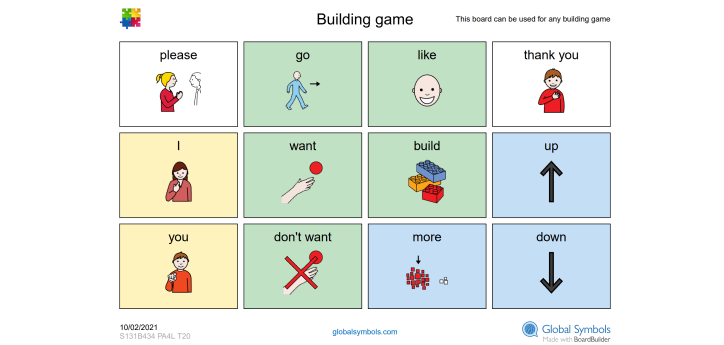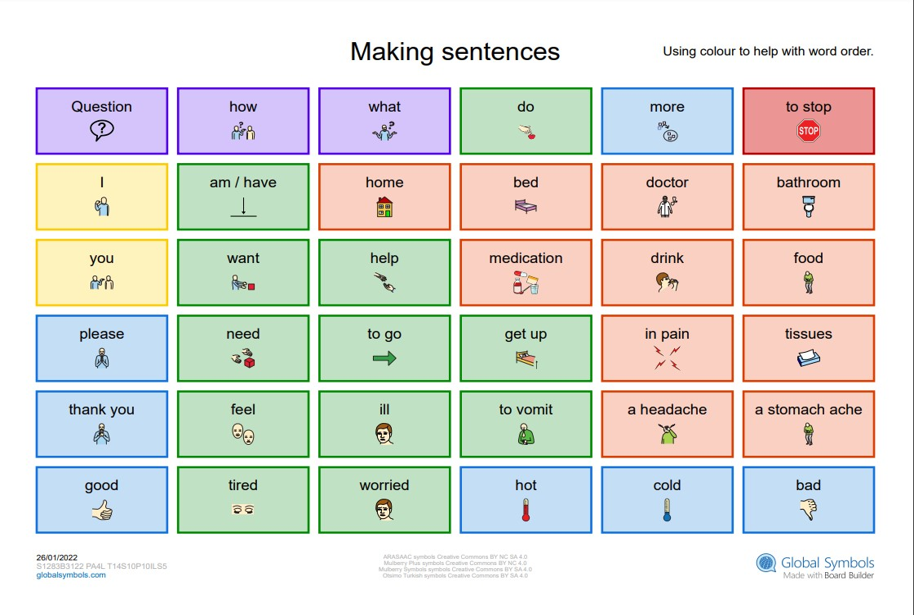Knowledge Base
Content
5c. Example - Communication Board Types
Updated by Global Symbols with UNICEF ECARO
Although communication boards are a good starting point for the implementation of AAC, every professional should evaluate their goals for the child and communication partners as they plan ahead.
- Will there be a main board with core vocabulary with spaces for additional words as they are learnt? (making sure symbols stay in one position on the board to help memory skills.) See Core Examples on PrAACticalAAC

- Will one board become many and be the start of a communication book with categories or different topics as you plan for progression?
Communication boards, books and AAC applications can vary in complexity as well as the types of topics they cover.
Activity-based communication boards are created for specific activities, events, or topics. For example building with bricks (download PDF).

Through these kinds of boards, children have their first real opportunity to actively participate in games, shared book reading, and other activities.
Most activity-based communication boards include core vocabulary and a variety of word classes: pronouns, verbs that relate to the activity, prepositions and object nouns.
The choice of words depends on the skills and abilities of the child and the type of activity.
Making the background to cells or a border around a cell a set colour can help when teaching word order in phrases or sentences. Different colours are used by different systems - the most important thing is to be consistent in what you use and the way you use it, especially when considering bi-lingual or multilingual situations.

The example shows the Modified Fitzgerald Key
- Blue: Adjectives.
- Green: Verbs.
- Yellow: Pronouns.
- Orange: Nouns.
- White: Conjunctions.
- Pink: Prepositions, social words.
- Purple: Questions.
- Brown: Adverbs.
Further guidance from the Amercican Speech, Language, Hearing Association (ASHA) about making communication books


